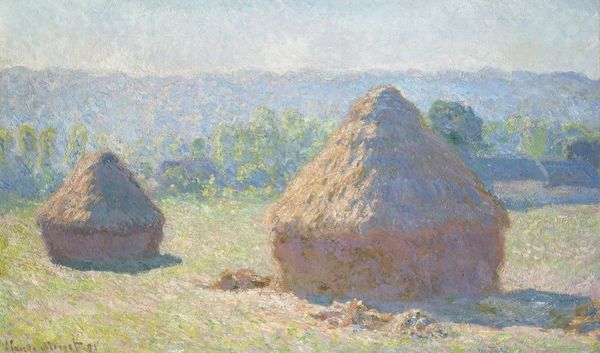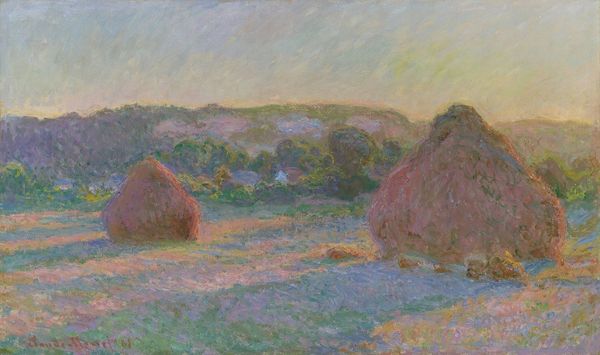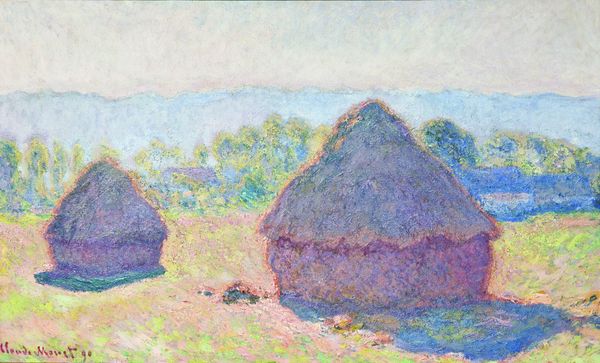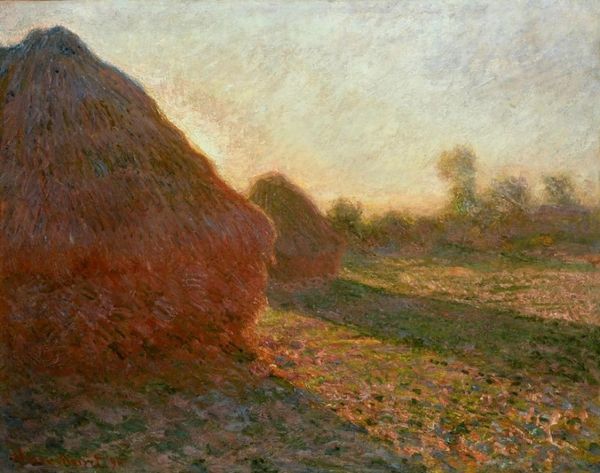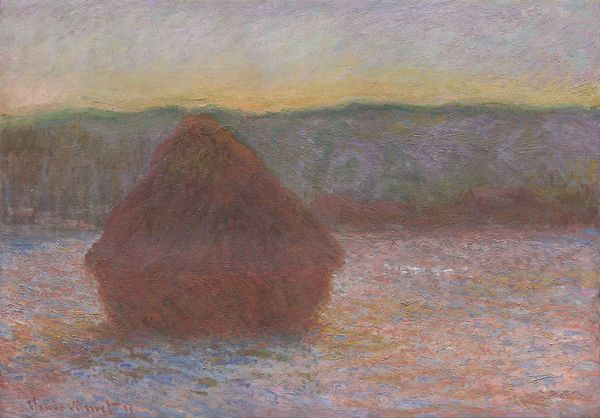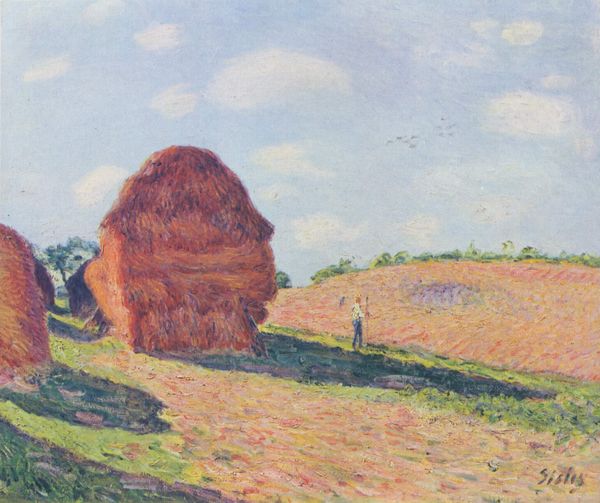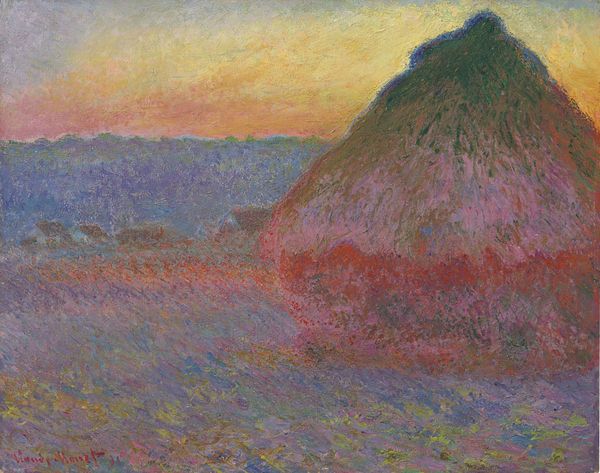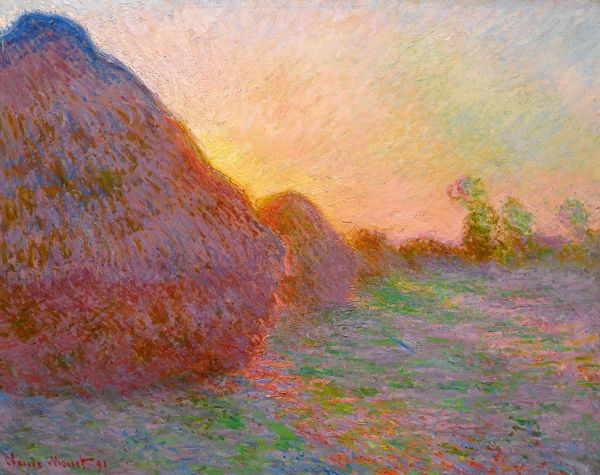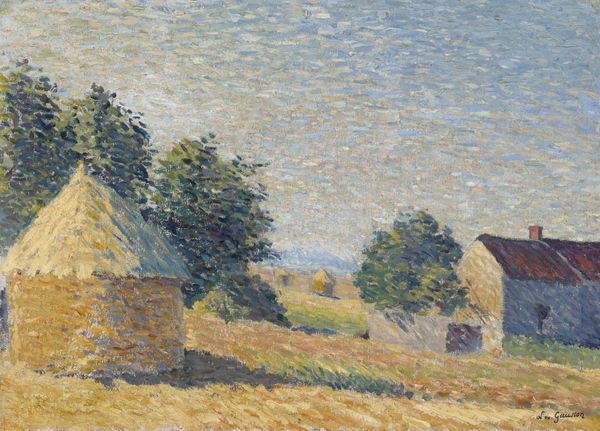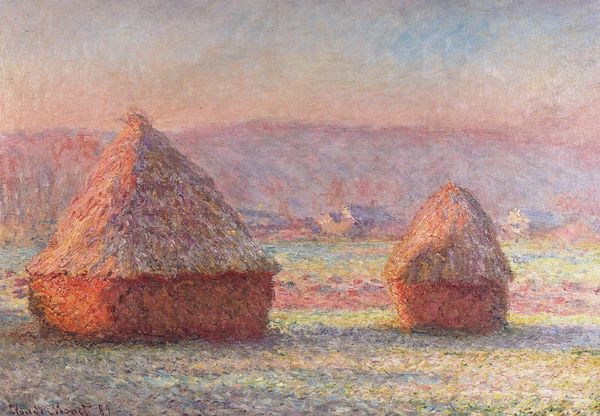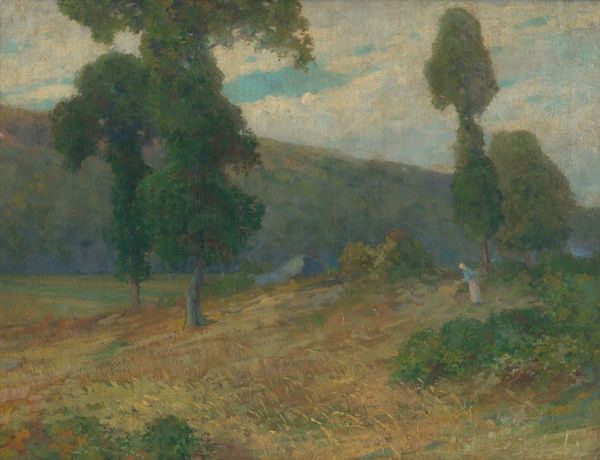
painting, plein-air, oil-paint
#
water colours
#
painting
#
impressionism
#
plein-air
#
oil-paint
#
landscape
#
realism
#
monochrome
Dimensions: 66 x 101 cm
Copyright: Public domain
Curator: Standing before us is Claude Monet’s "Haystacks, midday," an oil on canvas completed in 1890. It’s currently housed here at the National Gallery of Australia. Editor: My immediate response is tranquility. There's a stillness in the scene, even a softness, that draws you in. The muted palette and diffused light create a soothing, almost dreamlike atmosphere. Curator: Monet was deeply concerned with capturing the ephemeral nature of light and atmosphere, a key feature of Impressionism. These haystacks, or grainstacks really, served as the ideal subject, almost a blank canvas, to explore shifting conditions. The "Haystacks" became a serial project in his oeuvre. Editor: Absolutely, and it’s worth noting the social context too. The late 19th century saw rapid industrialization. Monet, in depicting these rural scenes, consciously or unconsciously, offered a visual counterpoint. These stacks were, in essence, food that enabled lives and were fundamental to that time’s community existence. Curator: Fascinating. Indeed, the haystack is an age-old symbol. Consider its resonance in ancient agrarian societies as symbolic storage for times of uncertainty or, even, as markers of life's cyclical rhythm – sowing, reaping, storage. Editor: Yet the repetition of forms in the series subverts that reading somewhat. Instead, what endures are not necessarily symbols of sustenance, but rather the traces of human labor set against the backdrop of a fluctuating world. Are they icons or simply monuments of shifting visualities? The flattening effect and aerial view almost dehumanize the site, paradoxically making them also abstract shapes within a study of color. Curator: True. Monet was less concerned with the stacks themselves and more with how the light transformed them, emphasizing perceptual experience. Still, the image continues to reverberate for me; that subtle suggestion of life sustaining labor continues to anchor a rich emotional response, no matter how faint in Monet's intentions. Editor: And I think that's what's powerful here. Even divorced from an explicitly political reading, these “Haystacks” remain vital documents, prompting discussions on the role of humans amidst environmental change, a vital visual study of identity in light of our modern present.
Comments
No comments
Be the first to comment and join the conversation on the ultimate creative platform.

